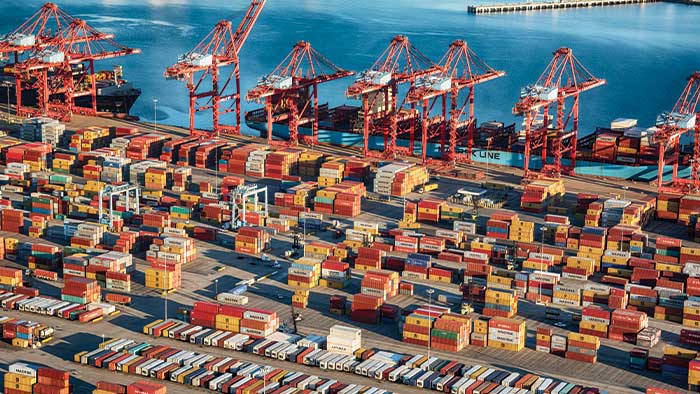Keys to Maximizing Infrastructure Bill Impact
- By [ Jess Dankert ]
- 12/14/2021
The Biden Administration’s Infrastructure Investment and Jobs Act (IIJA) represents a generational level of investment, however effective targeting is essential for maximum impact. Major ports have identified key priorities, including first-mile connectors, on-dock rail, and densifying existing land.[1] Modernization and automation is also key to boosting cargo velocity. As primary users of ports and freight infrastructure, large shippers like those of the retail industry should play a role in helping determine effective targeting of funds.
However physical infrastructure is not the sole answer; data infrastructure to enable better data sharing and interoperability is an essential component of modernizing the global supply chain for end-to-end visibility. Better data and measurement will also help address systemic operational challenges and illuminate long-term solutions.

Today’s Ports Challenges Unprecedented, Not Unexpected
The volumes currently straining the country’s seaports are unprecedented…but not unexpected. Most major ports anticipated cargo volumes like this to arrive. The Port of Long Beach is on the verge of processing more than 9 million cargo containers by the end of 2021[2]; however back in 2016, the Long Beach Board of Harbor Commissioners forecasted 19 million TEUs (standard containers) to be moved in 2020.[3]
Where is the disconnect? Partially, the desperately needed investment in the country’s freight infrastructure. Chris Connor, CEO of the American Association of Port Authorities, has commented, “The consequences of decades-long underinvestment in maritime infrastructure are playing out in real time in the form of supply chain disruptions and delays that have been exacerbated by the pandemic.”[4]
Supply chain issues are currently in the national spotlight, and now is the time to capitalize on this energy to address the pre-existing conditions that have contributed to the ongoing disruption.
We’ll be talking about the state of play at the ports and how retailers are navigating all of today’s supply chain challenges at our upcoming Retail Supply Chain Conference in Dallas, Texas. This is a can’t-miss event for retail supply chain leaders – learn more and join us here.
For more information, please contact RILA Vice President, Supply Chain Jess Dankert.
[1] https://labusinessjournal.com/news/2021/nov/22/ports-la-and-long-beach-take-new-steps-reduce-cong/
[2] https://polb.com/port-info/news-and-press/port-of-long-beach-breaks-cargo-record-12-09-2021/
[3] https://lbbusinessjournal.com/decade-of-underinvestment-san-pedro-bay-port-executives-call-for-systemic-change-in-supply-chain
[4] https://www.aapa-ports.org/advocating/PRDetail.aspx?ItemNumber=22767
Tags
-
Supply Chain
-
Transportation and Infrastructure
-
Supporting Free Markets and Fostering Innovation



